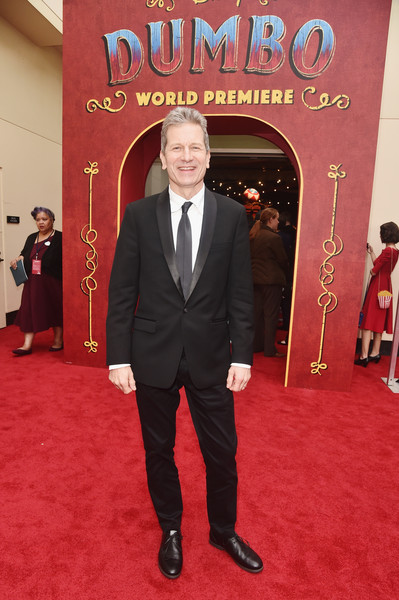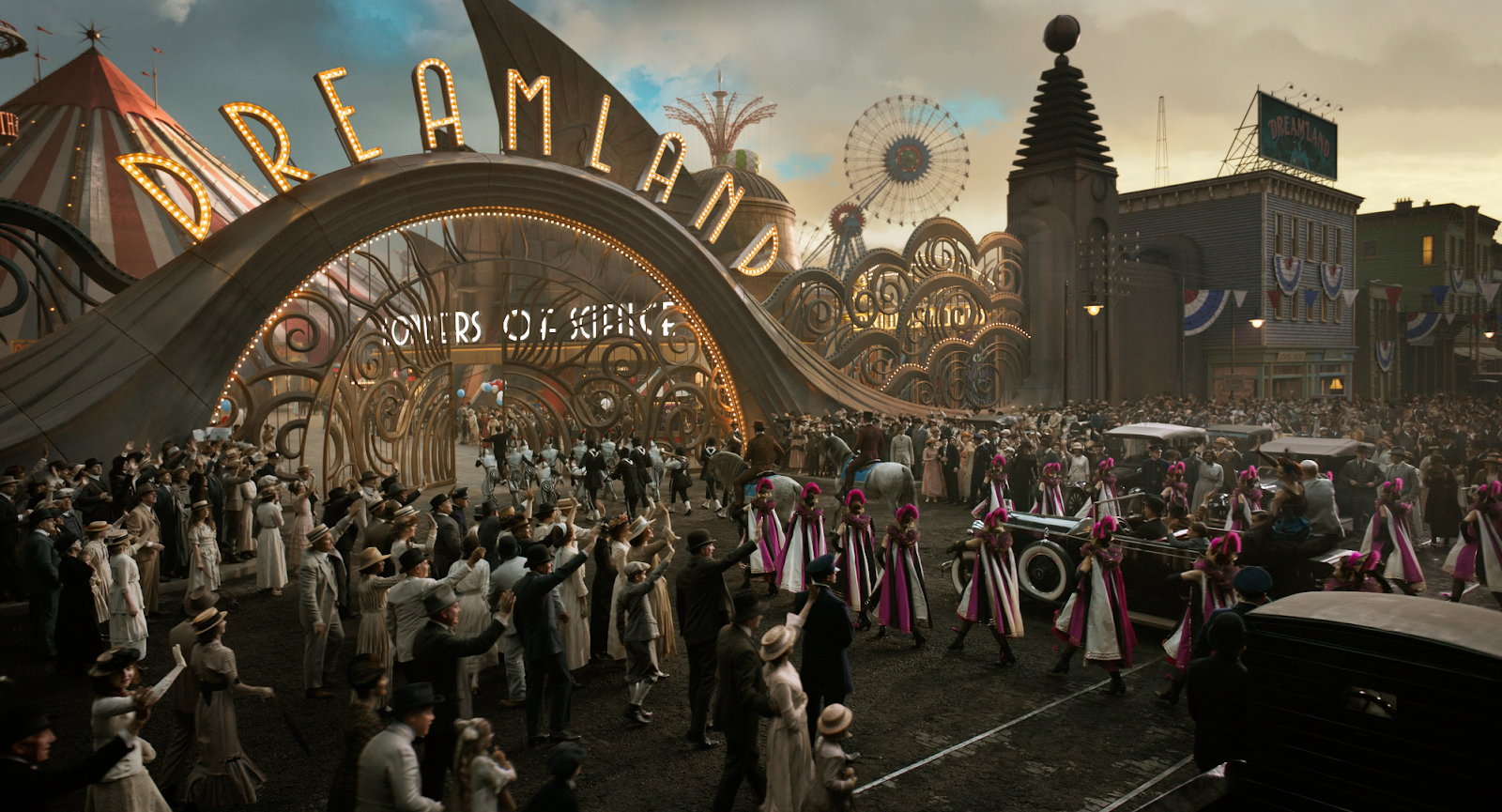Disney fans can bring home the live action retelling of the classic animated film Dumbo on Blu-Ray, DVD, Digital, and 4K. I recently had the chance to talk with Production Designer Rick Heinrichs, who has worked with Tim Burton since the start of his career as an animator and director. His Disney credits include The Watcher in the Woods, Vincent, Frankenweenie (1984), Tall Tale, The Nightmare Before Christmas, Pirates of the Caribbean (Dead Man’s Chest and At World’s End), Captain America: The First Avenger, Frankenweenie (2012), and Star Wars: The Last Jedi. He has also worked on some iconic non-Disney films including Beetlejuice, Batman Returns, The Big Lebowski, and Sleepy Hollow. Our conversation included a discussion of his days at Disney Animation, WED Enterprises, and how his time there influenced his designs for Dumbo.
Alex: “I saw you went to CalArts. What years were you at CalArts?”
Rick Heinrichs: “I went there one year. So I went to Finance College at Boston University. I went to The School of Visual Arts in New York for a year, just doing cartooning and animation. And then I went and did a year at CalArts. I had heard about CalArts, I think it was in its third year or something like that at that point. I'd actually visited CalArts before the character animation program even started back in '74 when there was just the Jules Engels' graphic animation classes because I was desperate to find some kind of a college system where I could learn about animation. So when the character animation program started, they sent me a leaflet all about that and I was totally jazzed about the idea of doing character animation and being taught by the old pros at Disney. And it was just not good for that. I mean, part of it was … I arrived there as a twenty-two-year-old, and I was in a class full of seventeen and eighteen-year-olds who had graduated from high school, and it was their first college experience. But it was actually a really unique set of instructors. I found that by going there and then obviously by going to Disney later, and being around not just Tim [Burton], but Henry Selick and John Lasseter and Brad Bird, and all these different people who had been through the program at CalArts, that there was a group of people who, like myself, had been exploring some place to go to expand their knowledge and experience with animation which seemed like a very highly technical, and yet, artistic endeavor. But that just didn't have the academic support that it does now. I mean, there are programs in animation and even production design at a number of different schools now, which is a good thing because it's become a vast industry since the time that I was at that stage four decades ago. So, sorry, I forgot your question.”
Alex: “No, I'm glad you expanded, because I was really just curious to know more about your time there and who you were there with, because a lot of big names in the animation industry today started there. And A113 is a Pixar Easter Egg in every film. Now, what were the films, or what were the, I guess, sources of inspiration that sparked your interest in becoming an animator, or learning more about the field of animation?”
Rick Heinrichs: “Well, I was always a huge fan of the Disney animated features as well as the Warner Brothers cartoons, and really just couldn't get enough of it. I, myself, I went to, as I said, fine arts college and ended up majoring in sculpture, because that was also a great interest of mine. So by the time I got to Disney Studio, I had this … I taught a few classes to classmates, actually, others of the animators into sculpting and how to turn a head around in 3D and be able to understand the way an object looks from different angles, and all that sort of thing which is so important, certainly for Disney style animation. It was that interest in both animation and sculpture that led me to stop-motion animation and my own experiments with it as a kid and growing up, and then led me to … After I had done a couple of initial forays into collaboration with Tim, The Black Cauldron, and we had worked together for a few things on Fox and the Hound. He had done a storybook about a little boy named Vincent, based on his love for Vincent Price. And it was my suggestion that we do it as a stop-motion animated film. And of course, Tim loved stop-motion from Rudolph the Red-Nosed Reindeer and all the Rankin & Bass stop-motion films from that period, so there was a lot of mutual interest in that sort of thing. We also both really like German Expressionism, Cabinet of Dr. Caligari, how you could tell that the early animators, the ones who ended up designing and developing the look for the original Dumbo as well as al the other stuff from the golden age, how they were very naturally intuitively expressive with the way that they abstracted and depicted life around them into these stories and characters. So it was a very fertile period of taking in all those different interests and actually channeling them into something very specific, in this case, Vincent. So the first thing we did, we did something for the Disney Channel. It was more of a martial arts version of Hansel and Gretel done as a live action film. Ultimately, leading to Frankenweenie as a live action film back in the '80s, pretty early '80s actually. And so things just grew and went on and extrapolated from there with Tim into his directing these huge films, and for myself, developing into an art director and production designer for both live action and for animation. But it was that sort of seminal discovery of those elements and figuring out how to channel it into something that felt new and exciting at the time that inspired all the stuff that came later.”
Alex: “During some of your training and your time at Disney, I believe you encountered some of the Nine Old Men and some of the Walt-era animators who may have even worked on, or started with Dumbo. Now, your approach to the set design for Dumbo, there's obviously some elements that are very familiar to fans of the original animated classic, and then there's quite a lot of new stuff. In particular, Dreamland is a whole environment that is original and unique to the Tim Burton version. What was your approach and your sources of inspiration for those designs?”
Rick Heinrichs: “We knew we needed to nail the sense of the Midwest and what I call Heartland in contradiction to Dreamland, that we wanted to entirely through visuals where possible, to put across the idea of both family and … And so, we were inspired by the work of people like Edward Hopper and then obviously the Disney animators as well, who drew so beautifully all this stuff. Once we managed to nail the look and feel of what we considered to be our baseline, which is that, if you will, Kansas part, compared to Oz, that allowed us to expand the fantasy elements and stylize the show into a much more futuristic and forward looking concept for Dreamland. Not exactly historical, because we were really riffing on elements that one could assign to the early part of the century, the Coney Island look and feel, but adding in a lot of elements that probably would be more a part of the '30s World's Fair and expositions from later on. Some elements even hinted at '50s design. So what's fun about working in a narrative structure is the ability to expand and stylize the history of it. We wanted to be rooted in it, so we did a lot of research on Coney Island and the proper look and feel for all of that. And then we used that as a basis upon which to caricature the elements that we wanted to push. And that's what gives the look and feel of the park. That gussies it up and drives the sense of a remarkable place that this remarkable person is the driving force behind, Vandevere. But that something's not quite right there, and that at the heart of it, that’s much colder and darker than at first appears to the eye. And all of that gives you a sense of the journey that you're on, going from the Heartland to Dreamland and back to the Heartland, and the appreciation for the smaller, warmer, more mundane, but loving family aspects of life.”
Alex: “With Dreamland, when I saw it, I felt a little bit reminded of a mix of Pleasure Island from Pinocchio, but also images and imagery of Tomorrowland from Disneyland in the early days, and I think there was even a Hall of Science. How much of that was intentional or coincidental?”
Rick Heinrichs: “Well, I think that I'd like to say everything's intentional, but a lot of it is intuitive. Disneyland is just so deeply in my own conscience and that of Tim's, that I … that just comes out naturally. I know what you're talking about, specifically the Hall of Science. And the script reason and the character development reason for that scene was an underlying element to help propel the young female character and what her story was all about and also to physically be a place that her father could begin to appreciate her from. So we did have some dioramas there, which are always fun to play around with. Actually, one of my first jobs was at WED Enterprises for Disney, so I know exactly how they would develop the rides there. They would build these amazing 12-inch … an inch equals a foot scale models that you can ride through as if you were the boat going through the ride, or the car going through the ride. And I'm very familiar and was always incredibly fascinated with how they would depict elements that they would always try to also give a little bit of an education about. Edutainment as they called it, that both entertains and makes you come away with a little bit more knowledge about what you're looking at and what you're talking about. So there was an aspect of it as well and the kind of serpentine pathway through the museum that it's trying to evoke. And within the narrow scope of what we could do for that scene, it was such great fun to be able to riff on something that I'm so familiar with from the Disney parks.”
You can see Rick Heinrich’s amazing designs when you bring Dumbo home for your family to enjoy during movie nights this summer.




